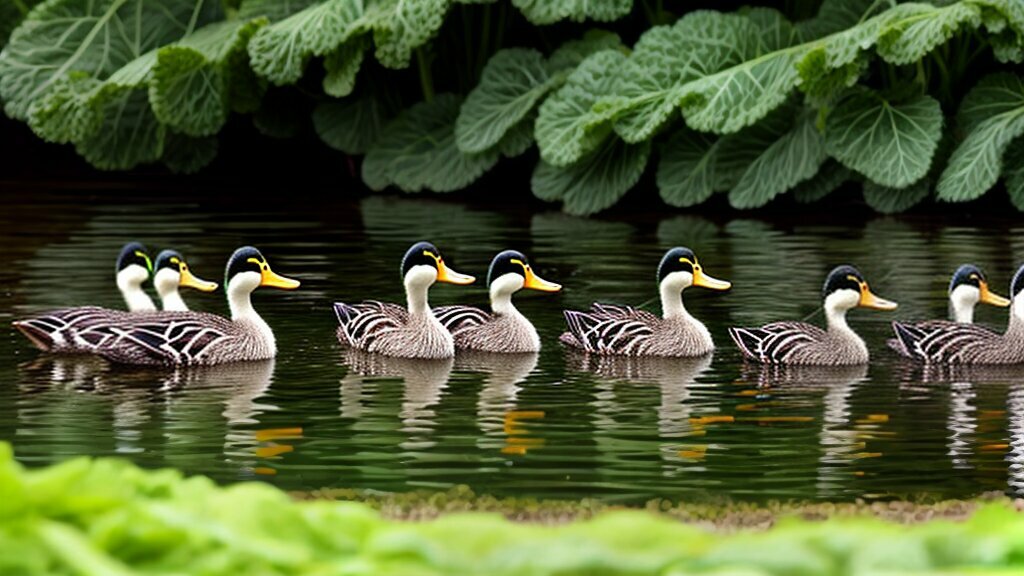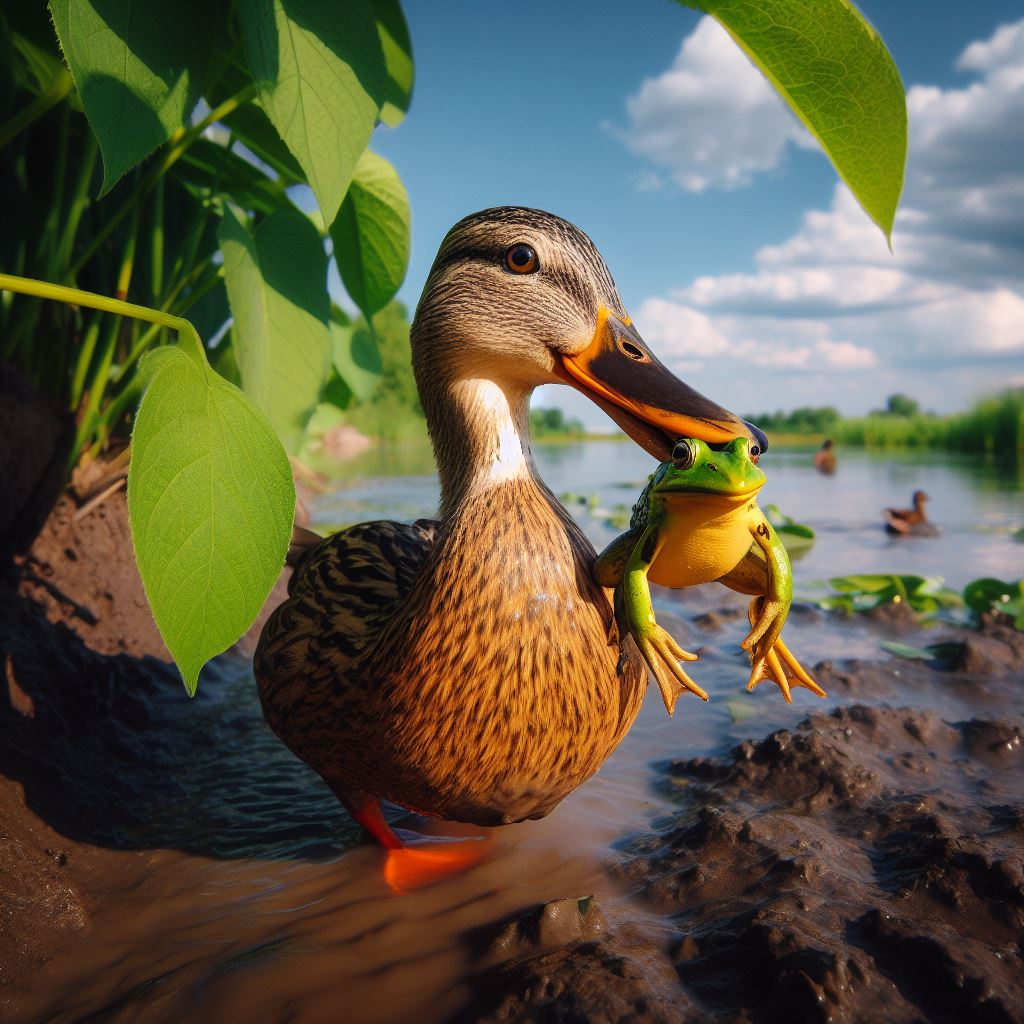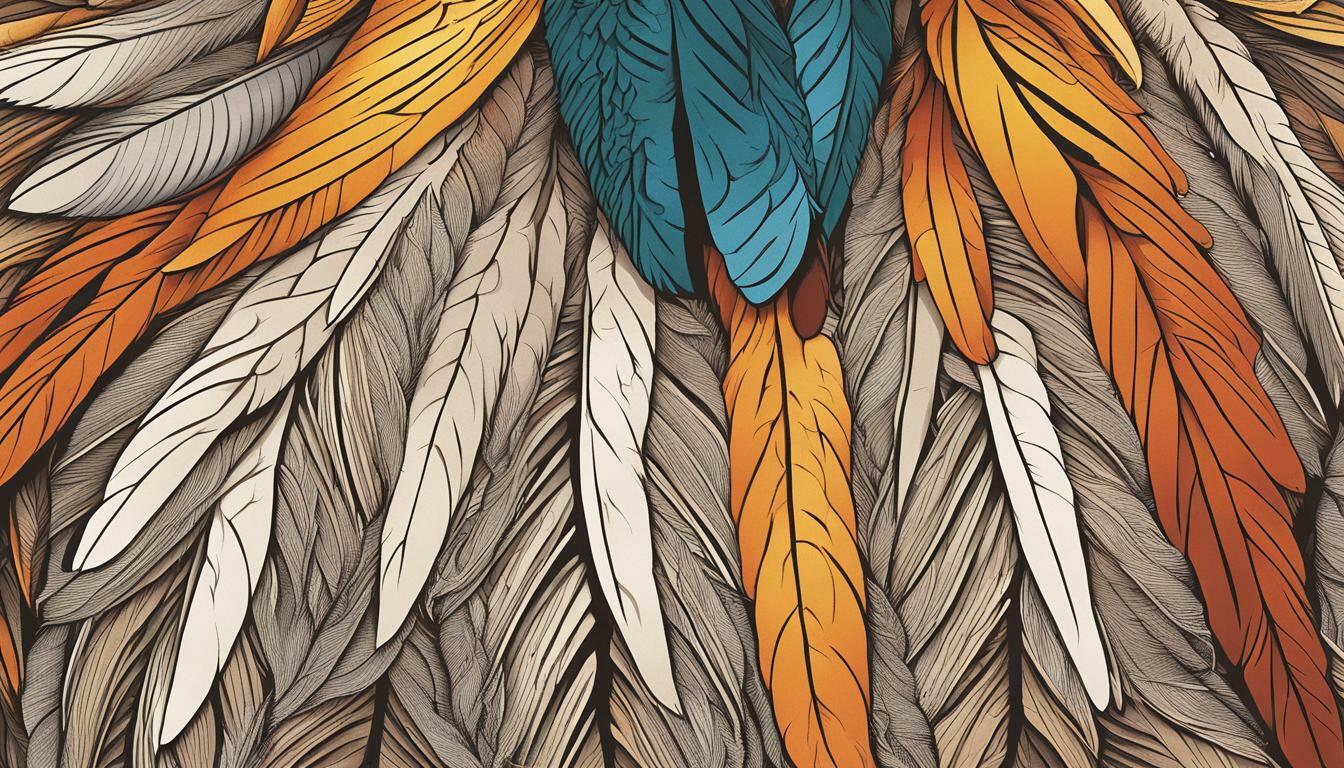Can Ducks Eat Kale?

Table of content:
Kale has become an extremely popular leafy green vegetable in recent years due to its stellar nutritional profile. Known for being highly nutritious and versatile, kale has made its way into many human diets as a nutrient-dense superfood. But what about our feathered friends – can ducks also benefit from eating fresh kale?
Kale Nutrition
Before diving into whether it makes sense to feed kale to ducks, let’s first look at why it’s so widely consumed by humans.
Kale is low in calories but packed with vitamins, minerals, fiber, and antioxidants. Some of the standout nutrients in kale include:
- Vitamin A – One cup of chopped kale provides over 100% of the recommended daily intake of vitamin A, which supports vision, reproduction, immune function and more.
- Vitamin C – Kale provides about 85% of the RDI for vitamin C per cup. Vitamin C is an antioxidant that promotes skin health and iron absorption.
- Vitamin K – A single cup of kale contains over 500% of the RDI for vitamin K, which is important for blood clotting.
- Fiber – Each cup of kale chips in 2-3 grams of dietary fiber. Fiber promotes digestion and heart health.
- Calcium – Kale contains 90-100 mg of highly absorbable calcium per cup. Calcium helps maintain bone density.
- Potassium – With about 300 mg per cup, kale is high in potassium which supports blood pressure and muscle function.
- Antioxidants – In particular, kale is high in antioxidants like quercetin, kaempferol and lutein which fight free radical damage.
So in a nutshell, kale contains a powerhouse lineup of vitamins, minerals and disease-fighting compounds. This makes it a rockstar vegetable in human diets, but can ducks also get in on the superfood benefits of kale?
Why Consider Feeding Kale to Ducks?
There are several reasons why kale can be a smart addition to a backyard duck’s diet in moderation.
First, ducks are omnivorous birds meaning they can eat both plant and animal foods. In the wild, ducks graze on grasses, aquatic plants, seeds, insects and small fish. They are open to eating a wide variety of foods.
Ducks raised in backyard coops depend on their caretakers to provide them with a balanced, varied diet. Like chickens, they need a good mix of grains, protein sources, greens, fruits and vegetables. Adding fresh veggies like kale can add important vitamins and minerals.
Specifically, kale provides nutrients essential to a duck’s health:
- Vitamin A – For eye and immune health, and proper growth in young ducklings.
- Calcium – For proper development of bones and eggshells.
- Antioxidants – To reduce cell damage from free radicals.
Additionally, ducks with access to greens like kale are less likely to overconsume grains and pellets. This can help prevent obesity and related issues like fatty liver disease.
Some experts also note that eating leafy greens may supply ducks with more of the water content they need, as opposed to relying solely on drinking water.
So incorporating modest amounts of chopped, fresh kale into a duck’s diet can provide added nutrition and variety.
Best Practices For Feeding Ducks Kale
If you want to provide your ducks with fresh kale as part of their balanced diet, here are some tips:
- Chop or shred the kale leaves into small pieces so it’s easier for ducks to eat. Whole leaves may go uneaten.
- Mix a few handfuls of chopped kale into their feed ration along with other grains, veggies and greens.
-Aim to feed kale 2-3 times per week at most to provide nutrients without overdoing it.
- To limit oxalic acid, offer kale alongside other low-oxalate greens like romaine lettuce, spinach and chard.
- Ensure ducks also have access to a calcium-rich source such as oyster shell.
- Introduce kale slowly and monitor droppings for any digestive upset.
- Feed kale as no more than 15% of their overall feed ration or 1-2 ounces per day for adult ducks.
- Remove uneaten kale at end of day to prevent spoilage.
Following these best practices allows ducks to benefit from the nutrition in kale safely as part of a diverse diet.
Can Pekin Ducks Eat Kale?
The Pekin is the most common domestic duck breed. These ducks are known for their calm temperament, hardiness and egg laying abilities.
Pekin ducks can absolutely eat fresh kale in moderation as part of their diet. In fact, the Pekin’s Chinese origin makes it well suited to digesting a variety of greens and vegetables.
The same feeding guidelines apply for Pekins as for any backyard ducks – chop kale finely, mix into their feed ration 2-3 times per week, provide access to calcium and monitor their droppings.
Pekin ducks tend to be voracious eaters, so they will likely gobble up chopped kale if you introduce it along with their favorite treats like corn, peas or birdseed.
Adding some fresh kale variety can be especially beneficial for Pekin ducks since they can be prone to obesity if allowed to over-gorge on calorie-dense grains or pellets. The fiber in kale promotes fullness.
Just don’t let your Pekins fill up exclusively on greens – they still need sufficient protein and carbs for energy. But used as a supplemental feed, kale can round out the diet.
Can Ducks Eat Frozen Kale?
If you want to feed your ducks kale when it’s not in season or preserve extras from your garden, you may wonder if frozen kale is a viable option.
The short answer is yes – ducks can eat frozen kale without issue. Some duck keepers actually recommend freezing greens like kale for a few days before feeding.
This is because freezing ruptures the cell walls in plants. The frozen kale will thaw into a mushier consistency that ducks seem to prefer over raw, crunchy greens.
Freezing may also reduce levels of certain anti-nutrients like oxalates.
To feed frozen kale to ducks:
- Blanch and chop kale before freezing for faster prep later.
- Thaw kale fully before feeding.
- Mix the thawed kale into their feed like you would fresh.
- Monitor droppings closely in case the extra water from thawed kale causes runniness.
Feeding frozen produce allows you to make use of excess garden yields and provide your ducks with greater diet variety over winter when fresh greens are scarce.
Can Ducks Eat Kale Stems?
When preparing kale for human consumption, we typically remove and discard the fibrous stems. But can ducks eat and derive nutrition from kale stems?
Fortunately, ducks are able to consume tougher plant parts than humans can digest comfortably. So the stem, leaves, and any fronds of the kale plant can all be fed to ducks.
Ducks don’t have teeth like humans – instead, they use their muscular gizzard to grind up food. The gizzard allows ducks to break down and digest fibrous kale stems.
That said, chopping or shredding kale stems into smaller pieces can make them more palatable and digestible. Some duck keepers will put kale stems through a wood chipper to create smaller “splinters” the ducks can swallow.
The stems contain beneficial minerals and nutrients just like the leaves, so it’s economical for duck owners to use the entire kale plant. Just remember to introduce the stems gradually along with the leaves to allow the duck gut to adjust.
Can Baby Ducks Eat Kale?
Once ducklings are 3-4 weeks old and have fully developed digestive systems, they can start to eat greens like kale in small quantities.
The exact age ducklings can eat kale will depend on the breed. Larger breeds mature faster than smaller bantams. Check with your local agricultural extension for specific recommendations.
Here are some tips for feeding kale to baby ducks:
- Chop leaves and stems into tiny pieces appropriate for a duckling’s small beak.
- Mix just a pinch of kale into their starter feed to begin. Slowly increase ratio of kale.
- For the first few weeks, feed kale just 1-2 times per week to monitor effects.
- Ensure grit is available to aid digestion, plus an extra calcium source.
- Watch for loose droppings indicating too much oxalic acid or fiber.
- Kale should never exceed 5% of total feed for young ducklings.
Even when very fresh, kale can cause more gastrointestinal upset in babies than adult ducks. Introduce cautiously and wait until the duckling’s digestive system matures before making kale a regular part of their diet.
Conclusion: Feed Kale to Ducks in Moderation
In conclusion, kale can certainly be part of a balanced diet for backyard ducks. Its stellar nutritional profile means kale provides vitamins, minerals and antioxidants ducks need.
However, kale should only be fed in moderation due to concerns over calcium inhibition from oxalates, excess vitamin K, and possible diarrhea.
By chopping kale into bite-size pieces, limiting kale to 1-2 times per week, and monitoring a duck’s droppings and health, kale can be a nutritious supplemental feed.
For optimal nutrition and variety, rotate kale with other greens like spinach, lettuce, Swiss chard, and brassica leaves. Introduce kale slowly and pair it with a calcium source like oyster shell.
Using these best practices, the superfood power of kale can safely be extended beyond humans to our feathered friends. Just remember – kale shouldn’t make up the bulk of any duck’s diet, but can add beneficial variety in controlled portions.
Welcome. I’m Adreena Shanum, the proud owner of this website, and I am incredibly passionate about animals, especially poultry. I founded adreenapets.com as a labor of love, stemming from my desire to share my knowledge and experiences with poultry enthusiasts worldwide.




